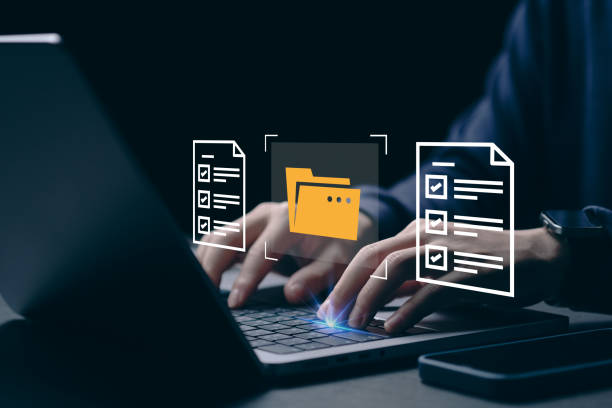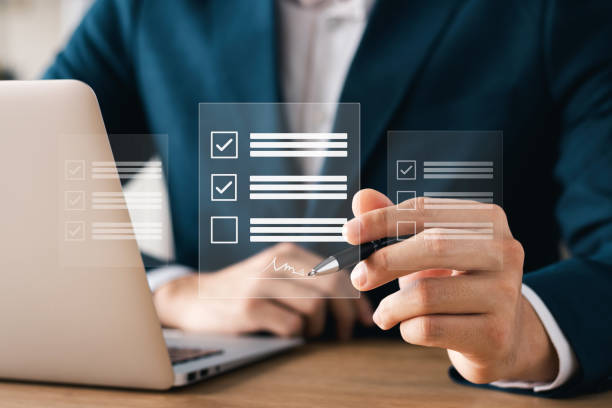What is internal SEO and why is it important?
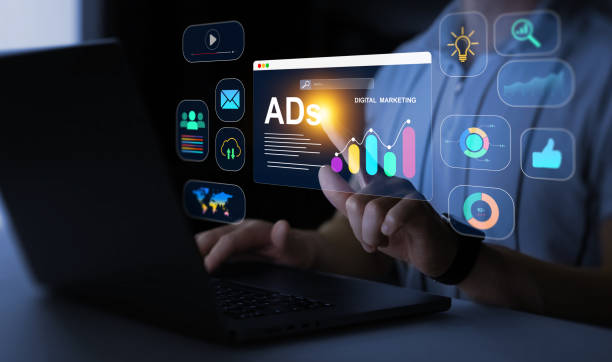
What is internal SEO and why is it important?
Internal SEO, also known as on-page optimization, is a set of actions taken to improve a website’s ranking in Google search results.
These actions include optimizing content, website structure, title tags, meta descriptions, and other internal website elements.
The importance of internal SEO lies in the fact that it helps Google better understand your website’s content and show it to users who are looking for relevant information.
In fact, internal SEO allows you to have more control over your rankings.
This is because you are directly making changes to the content and structure of your site.
To better understand internal SEO, imagine your website is a book.
Internal SEO is like the table of contents, chaptering, and editing of the book, which helps readers (search engines) find and understand the content more easily.
In today’s competitive online world, internal SEO is a necessity for any website that wants to be seen in search results and attract more organic traffic.
Without proper internal SEO, your website will be lost among millions of other websites.
Doing internal SEO correctly also provides the foundation for strong external SEO.
Internal SEO helps search engines better understand your content by optimizing various elements of your website, thereby improving your ranking in search results.
In this way, internal SEO is the first step to success in the online world.
Are you disappointed with the low conversion rate of your online store? Rasaweb turns your online store into a powerful tool for attracting and converting customers!
✅ Significant increase in visitor-to-buyer conversion rate
✅ Exceptional user experience to increase customer satisfaction and loyalty⚡ Get free consultation from Rasaweb!
Keyword Research – The Cornerstone of Internal SEO

Keyword Research – The Cornerstone of Internal SEO
Keyword research is the process of identifying the words and phrases that users use to search for information on Google.
These keywords should be relevant to your website’s content and have a decent search volume.
There are various tools available for keyword research, including Google Keyword Planner, Ahrefs, Semrush, and Ubersuggest.
Choosing the right keywords for internal SEO is crucial because these words determine what phrases your website will rank for in search results.
The goal of keyword research is to find words that have both good traffic and low competition.
Also, you should pay attention to the user’s search intent.
Is the user looking for information, buying a product, or a specific service? By understanding the user’s intent, you can create content that best meets their needs.
Keywords can be divided into three main categories: Head Keywords, Short-Tail Keywords, and Long-Tail Keywords.
The correct selection and use of these words directly affects the success of your website’s internal SEO.
Internal SEO without proper keyword research is like building a house without a map! Internal SEO is an ongoing process and needs to be updated and adapted to changes in Google’s algorithms.
Optimizing Title and Meta Descriptions

Optimizing Title and Meta Descriptions
The Title Tag and Meta Description are two important HTML elements that are displayed in Google search results.
The title is the title of your page, which is displayed at the top of the search results.
The meta description is a summary of the content of your page, which is displayed below the title.
Optimizing the title and meta description for internal SEO is very important because these two elements are the first things users see in search results.
An attractive and relevant title and meta description can encourage users to click on your link and enter your website.
Using relevant keywords in the title and meta description helps Google better understand the content of your page and show it to users who are looking for relevant information.
The title should be a maximum of 60 characters and the meta description should be a maximum of 160 characters.
Make sure your title and meta description are unique, engaging, and relevant to the content of the page.
By writing a strong title and meta description, you can improve your click-through rate (CTR) and attract more traffic to your website.
This click-through rate greatly helps improve your website’s internal SEO.
Title and meta descriptions are your first opportunity to attract an audience.
| Element | Description | Best Practices |
|---|---|---|
| Title Tag | The title of the page that is displayed in search results. | Use relevant keywords, maximum 60 characters, be unique |
| Meta Description | A summary of the content of the page that is displayed below the title. | Use relevant keywords, maximum 160 characters, be attractive and relevant |
Content Optimization – The King of Internal SEO

Content Optimization – The King of Internal SEO
Content is the king of SEO! This sentence means that high-quality and relevant content is the most important factor in ranking your website in Google search results.
Your content should answer users’ questions, meet their needs, and encourage them to stay on your website and interact with it.
Using relevant keywords in the content helps Google better understand the topic of your page.
But more important than using keywords is creating valuable and engaging content that users will want to read and share.
Your content should be unique, informative, and trustworthy.
Avoid copying content from others, as this can harm your website’s ranking.
Try to create content that is better than any other content on the internet.
This will help you rank higher in search results and attract more traffic to your website.
Also, update your content regularly to keep it fresh and relevant.
This shows Google that your website is active and worth visiting.
Content optimization is one of the main parts of internal SEO and has a significant impact on increasing your site’s traffic.
Are you tired of your company’s website not being seen as it should be and losing potential customers? Solve this problem forever with professional and effective website design by Rasaweb!
✅ Increase brand credibility and build customer trust
✅ Attract targeted sales leads
⚡ Contact us now for a free consultation!
Image Optimization – Improving Speed and User Experience
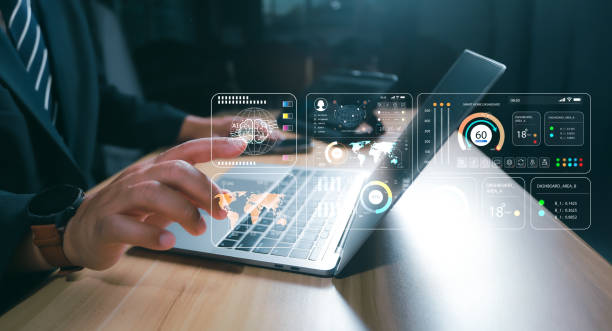
Image Optimization – Improving Speed and User Experience
Images play an important role in the attractiveness and understanding of your website’s content.
But large and unoptimized images can slow down your website’s loading speed and affect the user experience.
Optimizing images for internal SEO includes several steps: choosing the right format (JPEG, PNG, or WebP), compressing images to reduce file size, using alt tags to describe images, and properly naming image files.
The alt tag helps Google understand the content of your images and display it in image search results.
Proper naming of image files also helps Google better understand the topic of your images.
Using high-quality and relevant images can increase the visual appeal of your website and encourage users to stay on your website longer.
By optimizing images, you can improve your website’s loading speed, enhance the user experience, and increase your website’s ranking in search results.
The size of the images should be as small as possible without reducing their quality.
There are various online tools for compressing images.
Internal SEO of images is often overlooked, but it has a significant impact on the overall SEO of the site.
SEO-Friendly URL Structure

SEO-Friendly URL Structure
The URL structure of your website plays an important role in internal SEO.
Your URLs should be short, descriptive, and include relevant keywords.
Avoid using long and complex URLs that contain meaningless numbers and letters.
SEO-friendly URLs help Google better understand your website’s structure and properly index your pages.
SEO-friendly URLs are also more understandable for users and encourage them to click on your link.
Try to use the main keywords in your URLs, but avoid overusing keywords.
Your URLs should reflect the topic of the page and help users understand what page they are on.
Your URLs should be in lowercase and use hyphens (-) to separate words.
Avoid using underlines (_) in URLs.
A logical and organized URL structure helps improve the site’s internal SEO and also improves the user experience.
Choosing the right domain name is also part of this process.
Internal Linking – Creating a Strong Communication Network

Internal Linking – Creating a Strong Communication Network
Internal linking is the process of creating links between different pages of your website.
Internal linking helps Google better understand your website’s structure and find your important pages.
Internal linking also helps users easily navigate your website and learn more information.
Creating a strong communication network between pages of your website can improve your website’s ranking in search results.
Internal links should be relevant to the content of the page and help the user learn more about the topic.
Use appropriate anchor text for your internal links.
The anchor text should be descriptive and relevant to the destination page.
Avoid linking to irrelevant and low-quality pages.
Internal SEO using internal linking helps improve the user experience and increase the site’s ranking.
| Link Type | Description | Benefits |
|---|---|---|
| Internal Links | Links from one page to another on the same website | Improve site ranking, guide users, help Google understand the site’s structure |
| External Links | Links from your website to other websites | Validate content, provide more resources to the user |
Website Loading Speed – A Key Factor in SEO
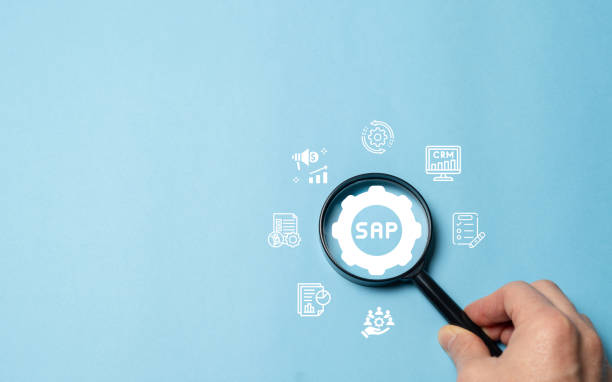
Website Loading Speed – A Key Factor in SEO
Website loading speed is one of the important factors in SEO and user experience.
Users expect websites to load in a few seconds.
If your website is slow, users may leave it and go to another website.
Google also pays attention to website loading speed and ranks faster websites higher in search results.
To improve your website’s loading speed, you can use various methods: optimizing images, enabling Gzip compression, using CDN, and reducing the size of CSS and JavaScript files.
There are various tools for testing website loading speed, including Google PageSpeed Insights and GTmetrix.
By testing your website’s loading speed, you can identify problems and take steps to fix them.
Reducing image size, using browser caching, and choosing a strong hosting have a significant impact on increasing site speed.
High site speed not only affects SEO, but also customer satisfaction.
Effective internal SEO requires special attention to website loading speed.
Is your company’s website as professional and reliable as it should be? Create an online presence that reflects your credibility and attracts more customers with a specialized corporate website design by Rasaweb.
✅ Build a powerful and professional image of your brand
✅ Convert visitors into real customers
⚡ Get a free consultation now!
Responsive Design – Optimizing for Mobile

Responsive Design – Optimizing for Mobile
Today, most users access the internet through mobile devices.
Therefore, your website should be optimized for mobile devices.
Responsive design means that your website automatically adjusts to the screen size of the user’s device.
Responsive design is an important factor in SEO and user experience.
Google ranks websites that are optimized for mobile higher in search results.
Also, users prefer to see websites that are displayed correctly on their mobile devices.
To make sure your website is responsive, you can use Google’s Mobile-Friendly Test tool.
If your website is not responsive, you should update it to be optimized for mobile.
Ignoring responsive design can negatively affect internal SEO and user experience.
Designing a site for mobile is no longer an option, but a necessity.
Continuous Review and Improvement of Internal SEO
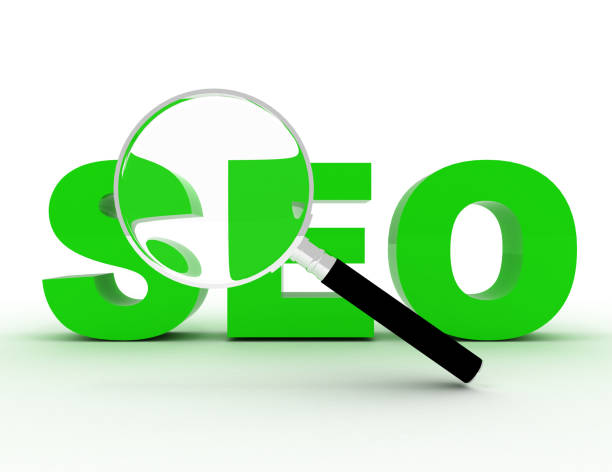
Continuous Review and Improvement of Internal SEO
Internal SEO is an ongoing process and requires continuous review and improvement.
Google’s algorithms are constantly changing, so you should update your website regularly to stay compatible with the latest changes.
To review the performance of your website’s internal SEO, you can use various tools: Google Analytics and Google Search Console.
These tools help you track your website traffic, identify the keywords that users use to find your website, and fix technical problems with your website.
Also, you should regularly update your website content and create new content to attract users.
By continuously reviewing and improving internal SEO, you can improve your website’s ranking in search results and attract more traffic to your website.
Internal SEO is a long-term investment that requires patience and perseverance.
There is no shortcut to success in SEO.
You should constantly strive to improve your website and create valuable content.
Frequently Asked Questions
| Question | Answer |
|---|---|
| What is On-page SEO? | On-page SEO refers to a set of actions that are done within your website to improve its ranking in search engine results. This includes optimizing content, site structure and HTML code. |
| Why is On-page SEO important? | On-page SEO helps search engines understand your page content and determine if your content is relevant to searchers. This is the foundation of any successful SEO strategy. |
| What are the key elements of On-page SEO? | Page Title (Title Tag), Meta Description, keyword usage, image optimization, heading structure (H1, H2, …), internal linking, and content quality are key elements. |
| How to optimize the Page Title (Title Tag)? | The page title should include the main keyword, be attractive and compelling to click, and be between 50 and 60 characters long (or a suitable pixel) to be fully displayed in search results. |
| What role does Meta Description play in On-page SEO? | Meta Description is a summary of the page content that is displayed below the title in search results. Although it does not directly affect the ranking, it helps SEO by increasing the click-through rate (CTR). |
| What is the importance of using a heading structure (H1, H2, H3) in On-page SEO? | Headings structure the page content and make it easier to read. H1 is usually the main title of the page and should include the keyword. H2 and H3 are used to organize subsections and help search engines understand the content hierarchy. |
| How to use keywords effectively in content? | Keywords should be used naturally and logically throughout the content, including the introduction, body, and conclusion. Avoid over-filling keywords (Keyword Stuffing). |
| What are the steps of image optimization for On-page SEO? | It includes compressing images to reduce size, using descriptive file names, adding appropriate Alternate Text (Alt Text), and optimizing the image title and description. Alt Text is vital for accessibility and helping search engines understand the content of the image. |
| What is Internal Linking and what are its benefits? | Internal linking means creating a link from one page on your website to another page on the same website. This helps users easily navigate your site, distributes page authority throughout the site, and helps search engines better understand your site structure. |
| What is the importance of content quality in On-page SEO? | Quality content that is accurate, comprehensive, and valuable to users is the cornerstone of On-page SEO. Search engines prefer content that meets the needs of users. Quality content leads to longer user presence on the site (Dwell Time) and a decrease in Bounce Rate, which are positive SEO signals. |
And other services of Rasa Web advertising agency in the field of advertising
Smart website development: an exclusive service for online growth based on accurate audience targeting.
Smart report: a professional solution to increase sales with a focus on accurate audience targeting.
Smart content strategy: a combination of creativity and technology to attract customers by using real data.
Smart digital advertising: a novel service to increase user engagement through attractive user interface design.
Smart conversion rate optimization: a creative platform to improve increase site visits by customizing the user experience.
And more than a hundred other services in the field of internet advertising, advertising consulting and organizational solutions
Internet advertising | Advertising strategy | Advertisement report
Sources
Learn On-Page SEO Optimization on the Website
,What is internal SEO and what is its importance?
,The Ultimate Guide to On-Page SEO
,What is internal SEO? Step-by-step On-page SEO training
? Are you looking to grow your business online? Rasaweb Afarin, a leading digital marketing agency, is your trusted partner on the path to digital success, offering specialized services including dedicated website design, professional SEO and targeted advertising campaigns.
📍 Tehran, Mirdamad Street, next to the Central Bank, South Kazerun Alley, Ramin Alley No. 6

